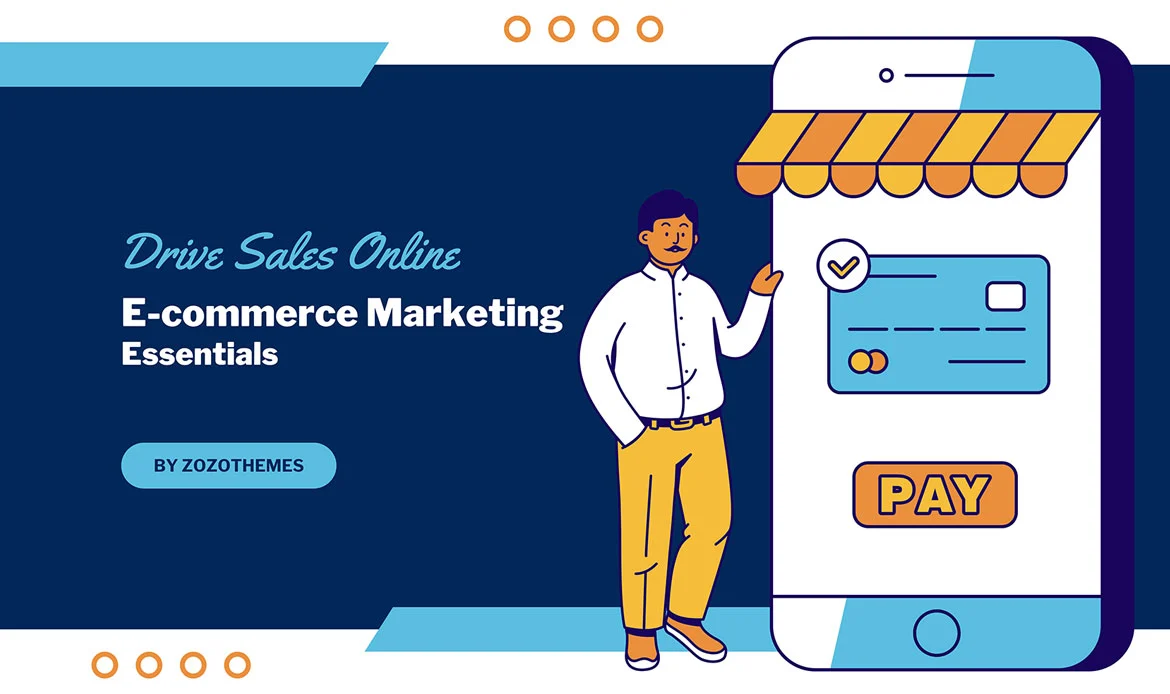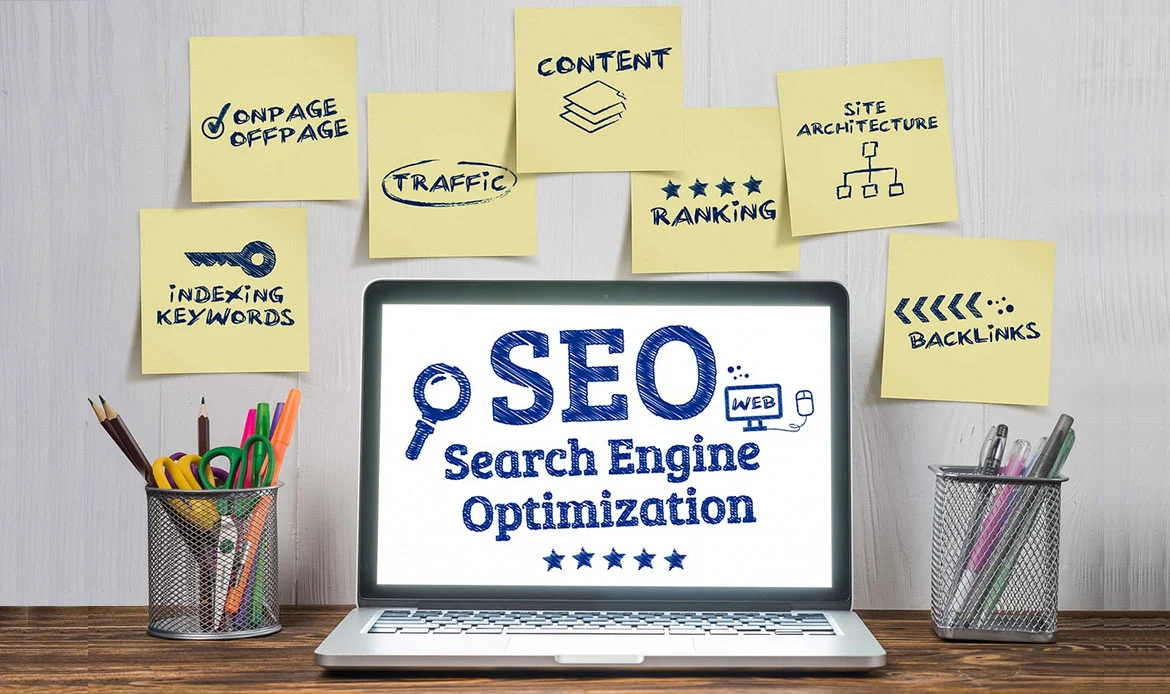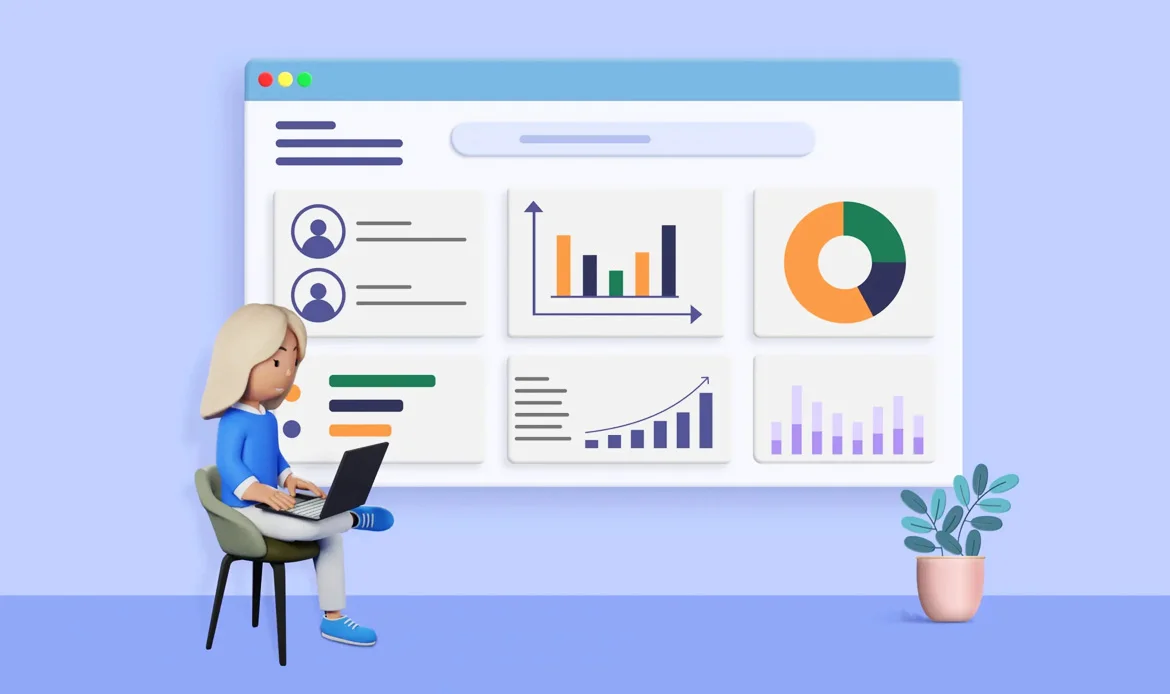Ready to skyrocket your online sales? Explore our in-depth article, “E-commerce Marketing Essentials: Drive Sales Online,” and gain insights into the crucial elements that can transform your e-commerce business. Don’t miss out on the strategies that top-performing brands swear by.
Mastering e-commerce marketing essentials is crucial for turning your online store into a sales powerhouse. By combining strategies like SEO, social media marketing, email campaigns, and paid advertising, businesses can attract targeted traffic, engage customers, and boost conversions. Implementing these essentials ensures your online store not only reaches more visitors but also converts them into loyal customers, driving consistent revenue growth.
Understanding E-Commerce Marketing and Its Key Types
E-commerce marketing refers to the use of digital channels, strategies, and tactics to promote and sell products or services online. The goal is to attract potential customers, drive traffic to an online store, and convert visitors into buyers. E-commerce marketing encompasses a range of activities, from website optimization and search engine marketing to social media advertising and email campaigns.
Key Types of E-Commerce Marketing
- Search Engine Optimization (SEO) – Improve visibility in search results.
- Content Marketing – Blogs, guides, and product descriptions.
- Social Media Marketing – Engage customers on Facebook, Instagram, TikTok.
- Email Marketing – Personalized offers and customer retention.
- Pay-Per-Click (PPC) Advertising – Quick visibility through paid ads.
- Affiliate Marketing – Partnerships that drive traffic and sales.
- Influencer Marketing – Leverage trust from niche influencers.
E-commerce Marketing Essentials
1. Understanding Your Audience
To drive sales online, it’s imperative to have a deep understanding of your target audience. Let’s consider an example: Imagine you run an e-commerce store selling fitness apparel and accessories. Begin by creating detailed buyer personas based on demographics, interests, and online behaviors.
Utilize tools like Google Analytics to analyze website traffic and understand where your audience is coming from. If your data indicates that a significant portion of your audience engages with fitness influencers on Instagram, consider this when shaping your marketing strategy.
2. Building a Strong Online Presence
Invest in creating a visually appealing and user-friendly website. A user-friendly website is the cornerstone of successful e-commerce marketing, encompassing various elements to ensure a positive and efficient user experience. This involves intuitive navigation, responsive design for different devices, clear and compelling calls-to-action, fast loading speeds, robust search functionality, and visually appealing design.
Ensure that your website is optimized for search engines (SEO) by incorporating relevant keywords in product descriptions, meta tags, and URLs.
3. Search Engine Optimization (SEO)
Search Engine Optimization (SEO) is a crucial aspect of e-commerce marketing that focuses on optimizing a website’s visibility in search engine results.
Link building from reputable sources, technical SEO enhancements, and local SEO strategies further boost the website’s authority and visibility. Regular monitoring and updates are essential to stay in line with changing algorithms and industry trends, ultimately helping e-commerce businesses attract organic traffic and drive sales.
4. Compelling Product Descriptions and Imagery
Compelling product descriptions and imagery play a pivotal role in influencing a customer’s purchasing decision. The product description should go beyond simple features and specifications, telling a story that highlights the benefits and unique selling points of the product. It should address the customer’s needs and desires, creating an emotional connection and making the product more relatable.
Additionally, high-quality and visually appealing imagery showcasing the product from various angles, and in different contexts, provides customers with a clear understanding of what they are purchasing. Images should be optimized for fast loading times and accompanied by alt text for SEO.
5. Content Marketing and Storytelling
In the digital realm, content is king. Develop a content marketing strategy that goes beyond product descriptions. Create engaging and informative content such as blog posts, videos, and infographics that not only showcase your products but also provide value to your audience.
Storytelling can be a powerful tool in connecting with customers on a deeper level. Share the story of your brand, the inspiration behind your products, and the values that define your business.
6. Social Media Marketing
Social Media Marketing is a pivotal aspect of e-commerce strategy, involving the strategic use of platforms like Facebook, Instagram, Twitter, and others to promote products and engage with the audience.
It encompasses creating visually appealing content, actively interacting with followers, utilizing paid advertising options, collaborating with influencers, and running promotions or contests. The key is to maintain consistent branding, analyze performance metrics, stay updated on trends, and actively participate in relevant communities.
7. Conversion Optimization
Optimize your website for conversions by continually testing and refining key elements. Conduct A/B tests on product pages, experimenting with variations in product images, descriptions, and call-to-action buttons. Simplify the checkout process, providing clear and transparent pricing.
If data indicates that customers abandon their carts at the shipping stage, consider offering free shipping incentives or prominently displaying shipping costs upfront to reduce friction in the buying process.
8. Email Marketing
Email marketing remains a cornerstone of e-commerce marketing. Build and segment your email list to deliver targeted and personalized messages to different customer segments. Implement email campaigns for product launches, promotions, and personalized recommendations.
Create visually appealing email templates that align with your brand, featuring high-quality images of your products. Utilize enticing subject lines to capture the attention of your audience and encourage them to open your emails.
9. Customer Engagement through Social Media
Engage actively with your audience on social media platforms. Respond promptly to comments, messages, and mentions. Run interactive campaigns, such as challenges or polls, encouraging users to share their experiences with your products.
Effective customer engagement on social media contributes to brand loyalty, customer satisfaction, and can even lead to valuable user-generated content and word-of-mouth referrals.
10. Customer Loyalty Programs and Promotional Campaigns
Plan and execute seasonal and promotional campaigns strategically. Offer exclusive discounts or bundle deals during these periods to capitalize on increased consumer interest. Use email marketing to communicate these promotions to your segmented audience, emphasizing the limited-time nature of the offers to create a sense of urgency.
By providing these incentives, businesses not only show appreciation for their loyal customers but also create a stronger bond, increasing the likelihood of repeat business and contributing to long-term customer satisfaction. Loyalty programs play a crucial role in retaining customers and building a dedicated customer base for sustained success in the competitive e-commerce landscape.
11. Mobile Optimization
Given the increasing prevalence of mobile shopping, ensure your website is optimized for mobile devices. Test the mobile user experience regularly, making adjustments to enhance navigation and streamline the purchase process.
Mobile optimization is critical for capturing impulsive buyers who may browse and make purchases directly from their smartphones. Utilize mobile-responsive design to provide a seamless and enjoyable shopping experience across various devices.
12. Paid Advertising in E-Commerce Marketing Essentials
Paid advertising involves businesses paying to display their promotional content to a targeted audience. Paid advertising provides a way to quickly increase visibility, attract targeted traffic, and promote products or services. Advertisers can control their budgets, target specific demographics, and measure the effectiveness of their campaigns through analytics tools.
Social media platforms also offer paid advertising options, allowing businesses to reach their audience through sponsored content and display ads. Overall, paid advertising is a strategic approach to reaching potential customers and driving conversions in the competitive digital landscape.
13. Influencer marketing
Influencer marketing is a strategic collaboration between brands and individuals who hold substantial influence within a specific target audience. This approach involves identifying and connecting with influencers whose followers align with the demographic of the brand.
Influencers act as trusted advocates, introducing and endorsing the brand to their audience, providing valuable social proof and enhancing the brand’s credibility. Leveraging the influencer’s reach, engagement, and authenticity, businesses can extend their brand awareness, drive traffic, and gain the trust of potential customers.
14. E-Commerce Marketing Essentials: Customer Reviews
Encouraging customers to share their experiences with your products and showcasing these testimonials on your website builds trust and credibility. Positive reviews serve as social proof, influencing potential customers who may be considering your products.
Actively seeking and highlighting these testimonials can create a positive perception of your brand, fostering trust among your audience and contributing to increased sales and customer loyalty.
15. Retargeting Strategies for E-Commerce Marketing Essentials
Implement retargeting strategies to re-engage visitors who may have browsed your website without making a purchase. Utilize tools like Facebook Pixel to track user interactions and display targeted ads to those who have shown interest in specific products.
For instance, if a visitor viewed a particular pair of leggings but did not make a purchase, retarget them with ads showcasing those leggings and offering a limited-time discount to incentivize completion of the purchase.
16. E-Commerce Marketing Essentials for Ongoing Success
E-commerce marketing is a dynamic field, and consumer behaviors and preferences can change rapidly. Regularly revisit and adapt your marketing strategies based on the latest trends and insights. Keep an eye on emerging platforms and technologies that may offer new opportunities for reaching your audience.
Also, Regularly monitor key metrics using analytics tools. Track website traffic, conversion rates, customer acquisition costs, and return on investment. Suppose you notice a spike in traffic following a collaboration with a influencer on Instagram.
E-Commerce Marketing Essentials: Drive Sales Online – FAQ
What are the essential strategies for successful e-commerce marketing?
Successful e-commerce marketing relies on a mix of strategies including SEO to boost organic traffic, content marketing to engage users, social media promotion for brand visibility, email campaigns for retention, and paid ads for faster reach. Combining these approaches helps drive consistent online sales.
How can I use e-commerce marketing to increase online sales quickly?
Focus on targeted campaigns like email marketing with personalized offers, PPC ads to capture high-intent traffic, and social media promotions to reach your audience. Optimizing product pages for SEO and providing clear CTAs can also convert visitors into buyers faster.
Is e-commerce marketing suitable for small online stores?
Absolutely! E-commerce marketing is scalable and can be tailored to any business size. Even small stores can benefit from SEO, social media, and email campaigns to attract traffic, build brand awareness, and grow sales without a huge budget.
Final Thoughts
In conclusion, mastering the E-commerce Marketing Necessities is not just a choice; it’s a strategic imperative for any online business aiming to thrive in today’s competitive digital landscape. We’ve explored the crucial elements that contribute to driving sales online, from optimizing your digital presence and implementing effective marketing strategies to honing in on conversion optimization techniques.
As you embark on the journey of elevating your online store, remember that success in e-commerce is an ongoing process of adaptation and innovation. Stay abreast of the latest trends, continue to analyze and refine your strategies, and always prioritize the customer experience.
Ready to Grow? Unlock E-Commerce Marketing Essentials Now
Take control of your digital growth today! With the right e-commerce marketing essentials, you can attract more customers, build stronger brand visibility, and drive consistent sales online.











